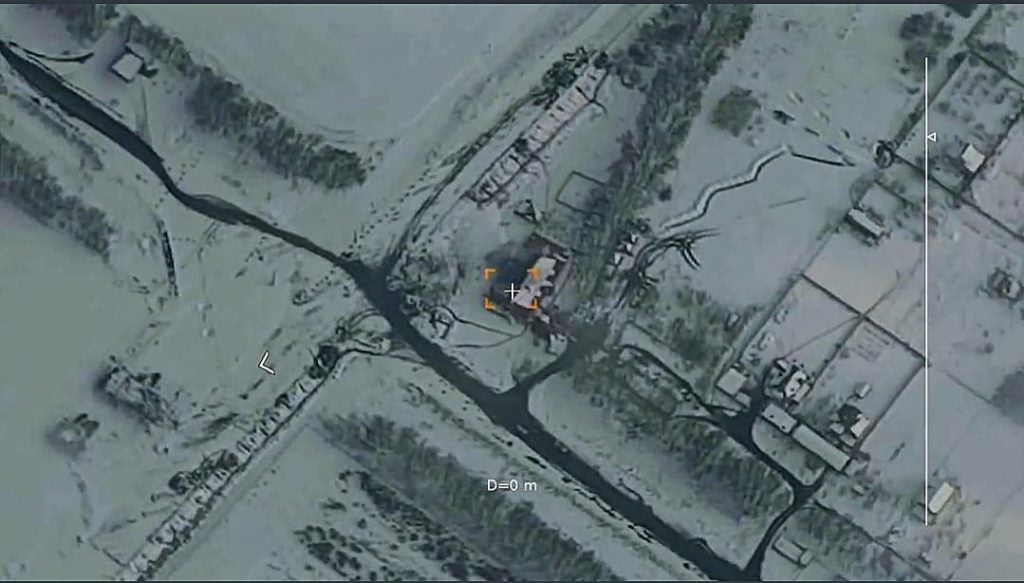Russia Releases Footage of Drones Being Utilized in the War in Ukraine
The Ukrainian government and military forces have shared a number of videos and images showing significant damage inflicted on Russian troops with Turkish-made Bayraktar TB2s during the war in Ukraine. Now the Russian Ministry of Defense has followed suit and also released several of their own videos showing Russian drones being used for reconnaissance, surveillance, and offensive purposes in Ukraine.
On the eighth day of the war, the Russian Ministry of Defense posted the first verified drone footage to its social media account. The command and observation post of the Aidar battalion, an assault battalion of the Ukrainian Ground Forces, was hit by a Kornet (9M133FM-3) ATGM-like missile fired by a Russian-made Orion-E MALE UCAV, according to a video released on March 4. The footage also revealed that the Orion-E UCAV’s electro-optical sensor had poor image quality and that the sensor remained inactive for some time after the ordnance detonated.
The Russian Federation’s Ministry of Defense released the second piece of footage showing a drone destroying a target in Ukraine on March 11. A structure described by the defense ministry as “the fortified castle of Ukrainian nationalists” was hit by a Russian Aerospace Forces drone in the footage. While the ministry stated that the drone hit the target with precision-guided munitions from a height of around 4 km, it did not specify which drone fired it.
On March 13, the Russian Ministry of Defense released additional footage of a Ukrainian multiple launch rocket system being destroyed, possibly with the Forpost-R, a drone developed from Israel’s IAI Searcher II. “A multiple launch rocket system was destroyed by a Russian Air Force unmanned aerial vehicle using high-precision munitions from a height of over 3,000 meters,” was the statement from the Russian Ministry of Defense.
Although the ministry claimed that a Ukrainian MLRS was destroyed, the quality of the footage makes this difficult to corroborate. Probably for this reason, the Ministry’s footage shows a pair of PGMs (precision-guided munitions) mounted under the Forpost-R drone’s two wings upon takeoff, but no ordnance during landing.
Aside from videos showing Russian drones being used offensively, the Russian Ministry of Defense also provided footage of drones being used for intelligence, surveillance, and reconnaissance. In drone footage posted on March 11, the ministry claimed that Ukrainian nationalists prevented the evacuation of cars carrying civilians from the city via the humanitarian aid corridor. On March 13, the ministry released footage of a Russian Armed Forces artillery strike during the destruction of the Ukrainian Armed Forces’ field command post with a Krasnopol high-precision shell. The footage released by the ministry on March 14, possibly taken from an Orlan-10 drone showed the destruction of MLRSs belonging to the Ukrainian Armed Forces and a Ukrainian ammunition depot by a missile strike.
According to official and unofficial videos and images, Russia has used Orion-E UCAVs developed by Kronstadt Group in Russia, the Russian licensed version of Israel’s IAI Searcher II UAV, Forpost-R UAVs, Russian made Orlan-10 UAVs for reconnaissance and electronic warfare, short-range Eleron-3 UAVs designed by the Russian industry, and KUB-BLA kamikaze UAVs in Ukraine.
So far, the Ukrainian Ministry of Defense has stated that Russia has lost a total of ten drones, but no official announcement has been made concerning the drone models. According to unconfirmed photographs from the army, the drones that were shot down were mostly Forpost-R, Orlan-10, and KUB-BLA kamikaze drones. A Russian drone was allegedly shot down by Ukrainian air defenses after ‘flying into Polish airspace’ in violation of NATO territory, according to 24 TV News. Poland has yet to issue an official statement regarding the incident. Because Poland is a NATO member, a violation like this might result in a substantial escalation of the current crisis.
Despite having far more drone command and control capabilities and experience than Ukraine, Russia has seemingly struggled to effectively coordinate these systems in the war in Ukraine. While our picture of the conflict and the weapon systems in use is relatively incomplete the Russian Ministry of Defense’s footage does not appear to be sufficient to compete with Ukraine’s successful TB2 drone campaign.

